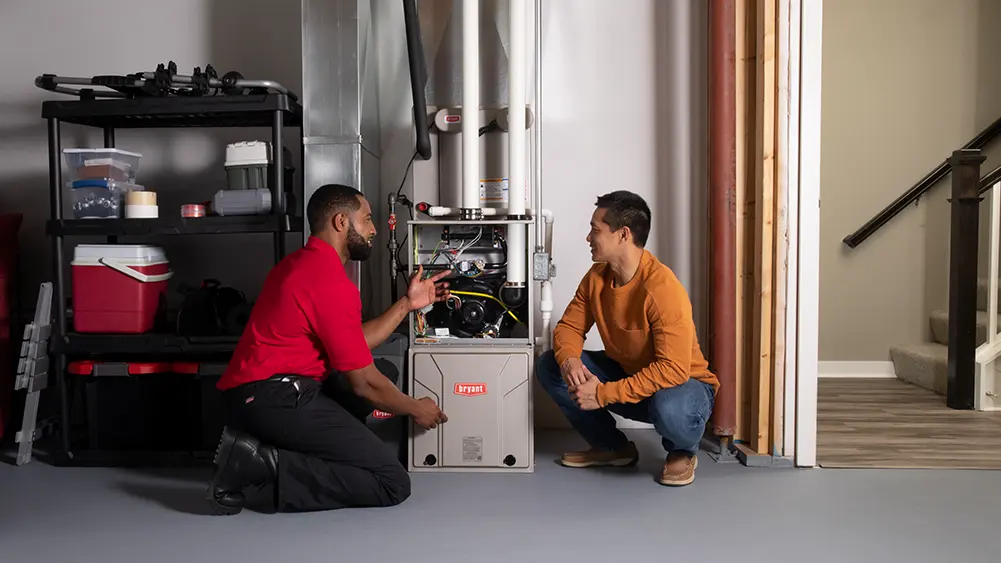
Common Heating System FAQs in Lubbock, TX
When winter rolls around in Lubbock, TX, homeowners often have questions about their heating systems. Whether you’re wondering if your current system will last through the season or considering a new installation, having reliable information is key. We’ve gathered the most common heating system FAQs to help you make informed decisions about keeping your home warm and cozy during the colder months.
The most common heating system in Texas is the central heating system, typically powered by a gas furnace. Gas furnaces are popular because they are efficient, reliable, and able to heat homes quickly even when the temperature drops. In more temperate areas, some homeowners also opt for heat pumps, which can both heat and cool the home.
In Texas, the life expectancy of a heating system like a furnace typically ranges from 15 to 20 years with proper maintenance. The milder winter conditions can sometimes extend this lifespan, but it’s important to have regular inspections to ensure your system is running efficiently and safely. If your system is approaching this age, it may be time to start considering a replacement to avoid unexpected breakdowns.
Yes, a heat pump is often recommended for Texas because of the state’s relatively mild winters. Heat pumps are energy-efficient and can provide both heating and cooling, making them a versatile choice for year-round comfort. However, they may not be as effective in the colder regions of Texas, where temperatures can occasionally drop below freezing.
In winter, a heat pump starts to lose efficiency when the outdoor temperature drops below 40°F. Below this temperature, the heat pump may struggle to extract enough heat from the outside air to warm your home effectively. In these cases, a supplemental heating source, like a gas furnace, may be needed to ensure consistent warmth.
It’s not necessary to turn off your heat pump in extreme cold, but you should ensure that it has a backup heat source, like a furnace or electric resistance heater. When temperatures drop below freezing, the heat pump may switch to its backup mode automatically. This ensures your home stays warm without the risk of damaging the system. If you’re concerned about efficiency in extremely cold weather, we can discuss options to optimize your system.
The most cost-effective temperature to maintain during winter is around 68°F when you’re home and awake. Lowering the temperature by 7-10°F for eight hours a day, such as when you’re asleep or away, can also significantly reduce heating costs. A programmable thermostat can help you manage these settings automatically, ensuring comfort without overspending on energy bills.
While not every home in Texas requires a furnace, many homeowners prefer them for their reliability and ability to provide strong, consistent heat during colder spells. In regions of Texas that experience more extreme winter weather, having a furnace can be a smart choice to ensure comfort throughout the season. Whether you need a furnace depends on your home’s specific heating needs, which we can assess for you.
A well-maintained furnace in Texas should last between 15 to 20 years. The state’s milder climate can sometimes extend the life of a furnace, but regular maintenance is key to ensuring it operates efficiently and safely throughout its lifespan. If your furnace is getting older, it might be time to consider an upgrade, especially if you’ve noticed a decrease in performance or an increase in your energy bills.
The best time to replace your furnace is typically in the late spring or early fall. During these off-peak seasons, demand for HVAC services is lower, which can lead to more competitive pricing and better availability. Planning ahead and replacing your furnace before the cold weather hits can also help you avoid emergency costs. We offer special promotions during these times to make your furnace replacement more affordable.
The cost of a new furnace can vary depending on the size of your home and the specific model you choose. While the initial investment might seem significant, we offer financing options and seasonal specials to help make the purchase more manageable. A new furnace can also lead to long-term savings through improved energy efficiency and lower utility bills, making it a smart investment in your home’s comfort.
When installing a new furnace, it’s often recommended to upgrade your thermostat as well, especially if your current one is outdated. A modern, programmable thermostat can optimize your new furnace’s performance, helping you save on energy costs while maintaining consistent comfort. We offer a range of thermostat options and can help you choose one that best suits your home’s needs.
Before replacing your furnace, it’s important to consider the size and efficiency of the new unit to ensure it meets your home’s heating needs. You should also evaluate your current ductwork, as leaks or damage can affect the efficiency of your new system. Finally, check if your thermostat and insulation are up to date to maximize your new furnace’s performance. Our team will guide you through the process, ensuring a smooth and successful installation.
Signs that your furnace may need to be replaced include frequent repairs, rising energy bills, uneven heating, or strange noises. If your furnace is over 15 years old, it may be losing efficiency, leading to higher operational costs. Additionally, if you’re experiencing inconsistent temperatures throughout your home, it could indicate that your furnace is struggling to keep up. We can perform an assessment to determine if it’s time for a replacement.
If your furnace isn’t working, start by checking the thermostat settings to ensure it’s set to ‘heat’ and that the temperature is higher than the current room temperature. Next, check the circuit breaker and reset it if necessary. Also, ensure that the furnace filter is clean, as a clogged filter can restrict airflow and prevent the furnace from operating properly. If these steps don’t resolve the issue, it’s best to call in a professional to diagnose the problem.
While heat pumps are energy-efficient and great for Texas’ mild winters, they do have some downsides. Their performance can decrease in colder temperatures, making them less effective during rare cold snaps. Additionally, heat pumps may have higher upfront costs compared to other heating options. However, their ability to provide both heating and cooling can offset these disadvantages, making them a good option for many Texas homeowners.
Contact Nugent Mechanical Contractors For Answers To All Your Heating System FAQs
For all your heating system FAQs and needs, contact Nugent Mechanical Contractors. Our experienced team is here to provide expert advice, quality service, and reliable solutions to keep your home comfortable year-round. Whether you’re dealing with a heating system issue or considering an upgrade, we’re just a phone call away, ready to help you make the best decisions for your home and family.
